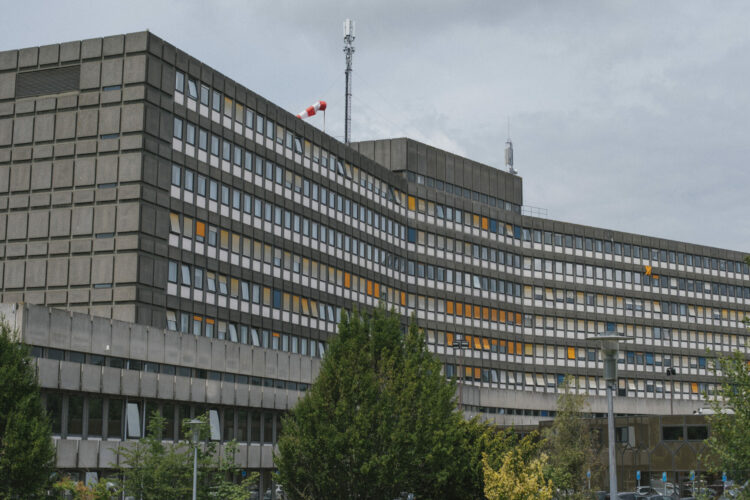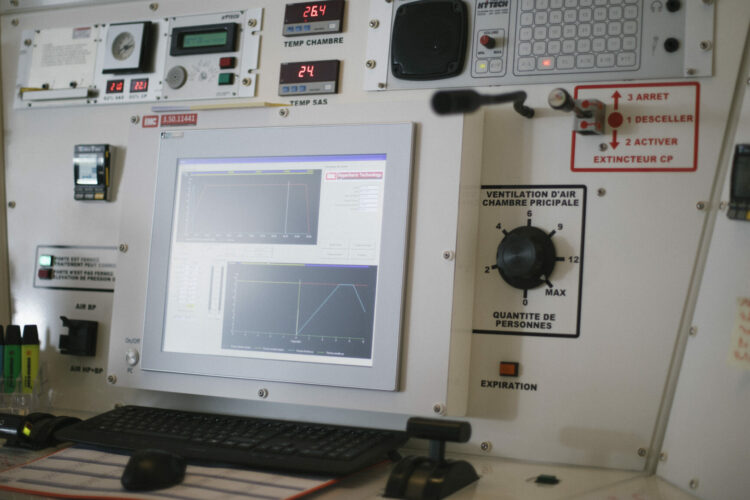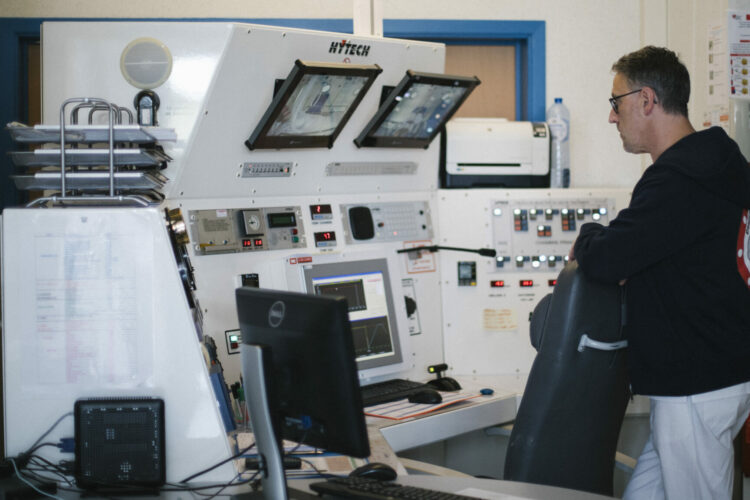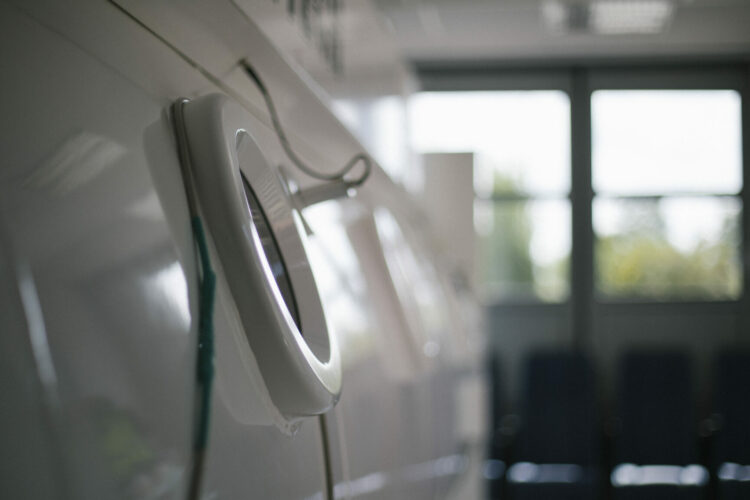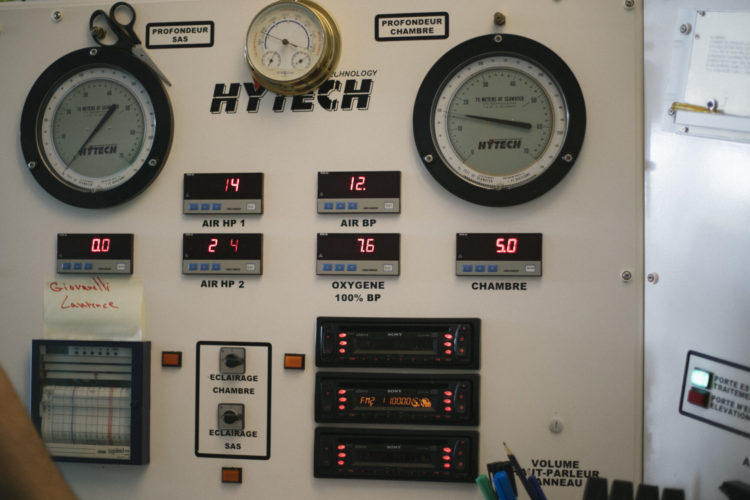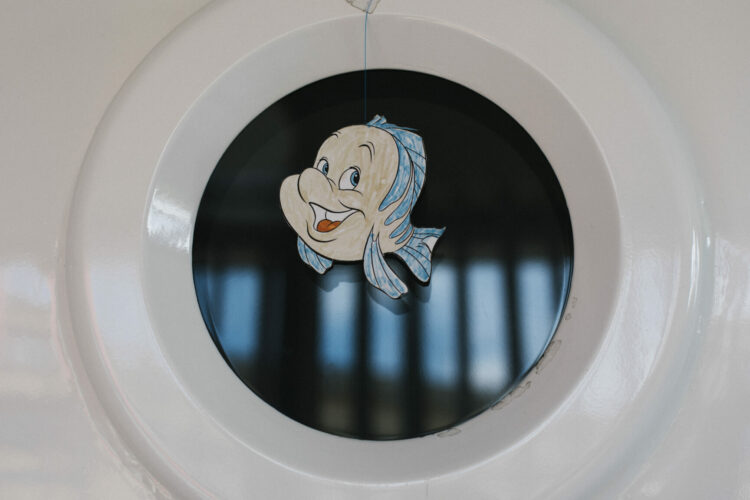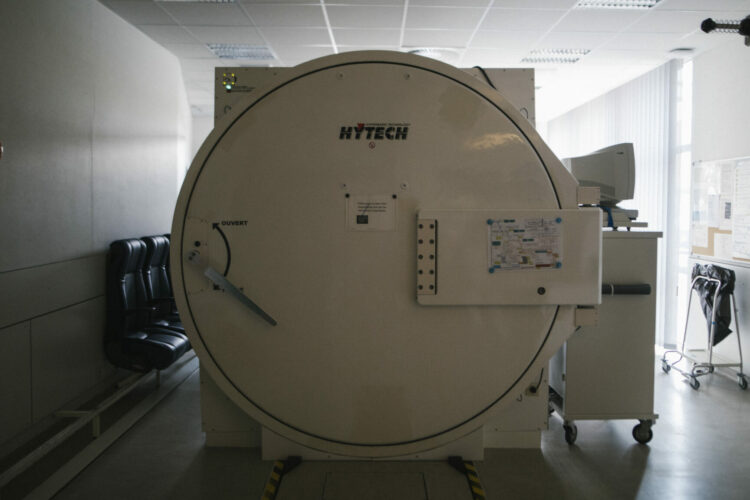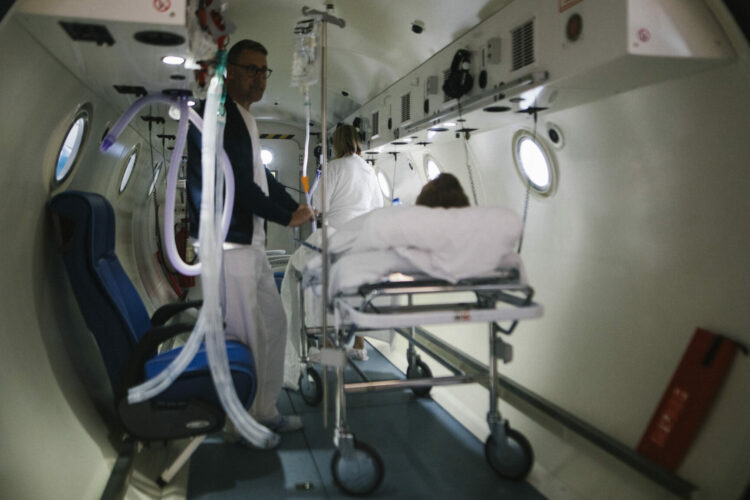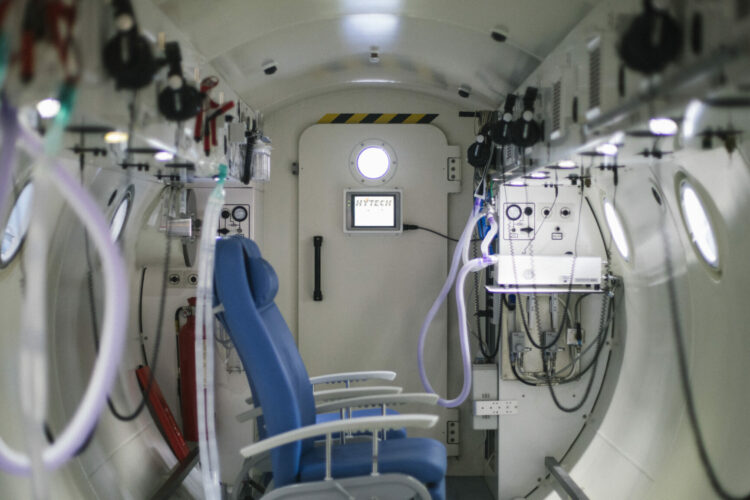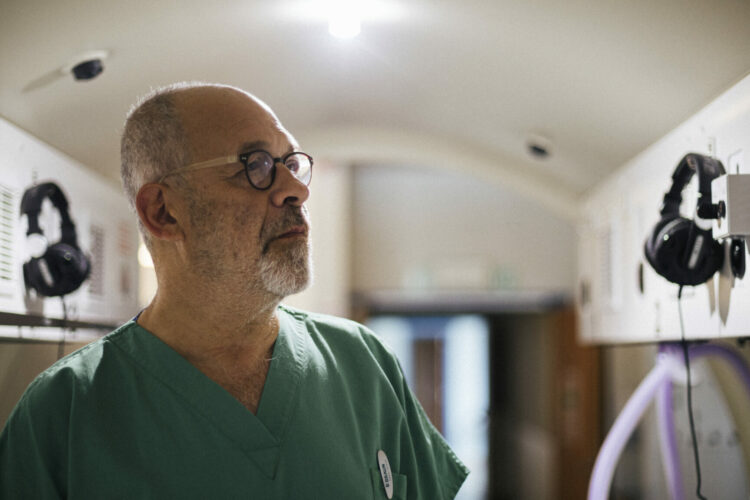Se soigner dans un sous-marin
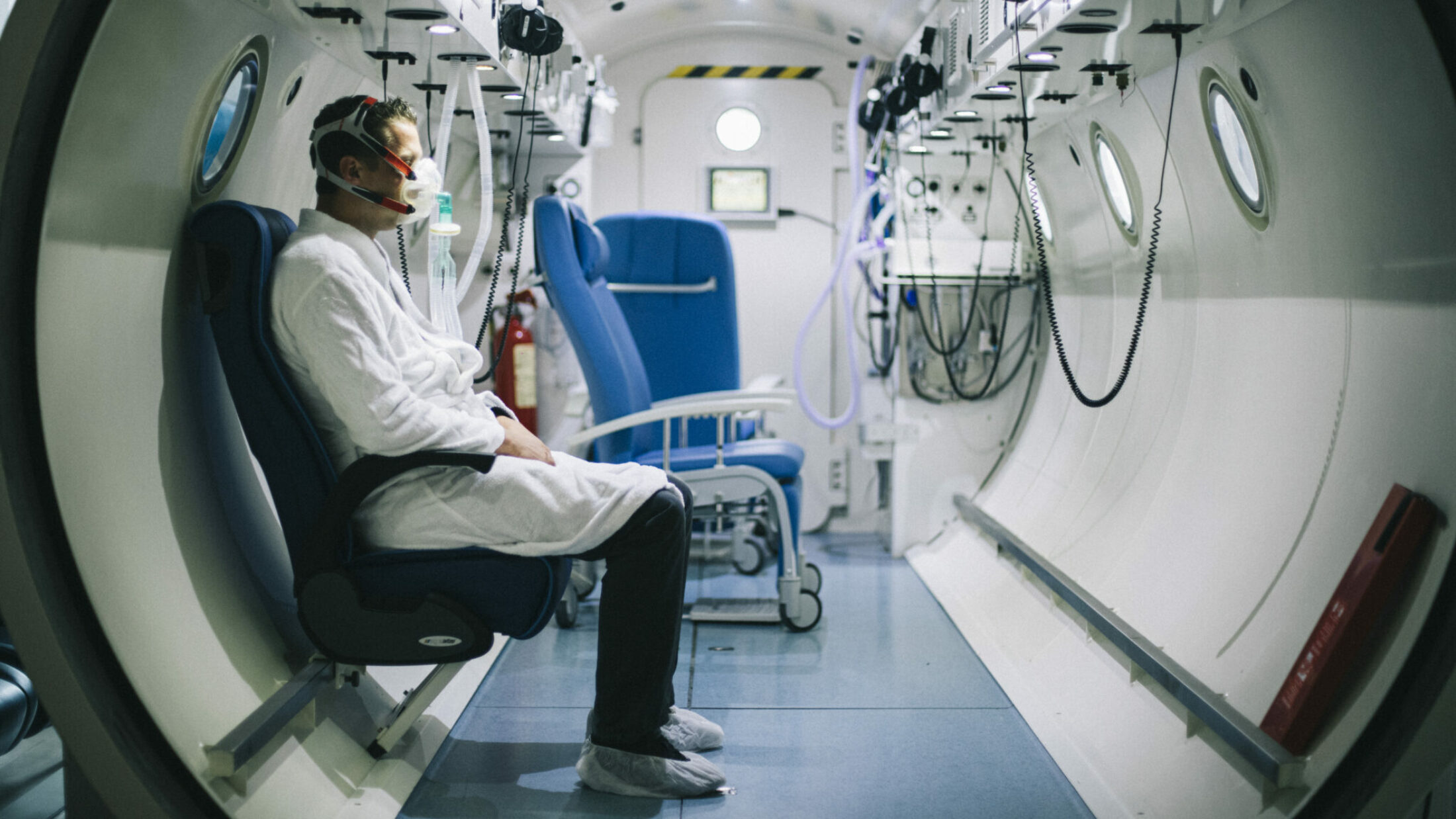
Montigny-le-Tilleul
At the Centre Hospitalier Universitaire de Charleroi (C.H.U.) unit at the André Vésale hospital, the hyperbaric medicine service, integrated into the emergency services, treats patients by simulating a dive to a depth of 15-30 metres.
The patients, wearing slippers and bathrobes, enter the hyperbaric chamber, which is a 10-metre long cylinder with windows. Patients enter through a circular door that weighs over 3 tonnes. “The chamber creates the same conditions experienced in a submarine or while scuba diving”, anaesthetist Daniel Jacobs explains. “Patients will have the same physical experience as a diver who descends to a depth of 15 metres.”
During treatment, the atmospheric pressure is raised to 3-4 bars in the chamber, compared to sea-level pressure of 1 bar outside the chamber.
The patients, settled in armchairs or on beds inside the chamber, will be fitted with respiratory masks. These masks will supply, depending on the pathology, 100% oxygen (daily, the air we breathe comprises 21% oxygen) or heliox, a mixture of oxygen and helium. An audio headset allows communication between the patients and the technician responsible for the chamber, who is outside. For some complex cases, the caregiver follows the patient throughout the entire treatment.

The specialised hyperbaric technicians control the entire installation, the smooth course of treatment and performing the required safety stops (in compliance with scuba diving tables). The installation is monitored by computer and manually if necessary.
A submarine trip
The “submarine trip” can begin once everyone is inside the chamber. The patients begin a 15-minute descent. When the chamber has reached the appropriate ambient atmospheric pressure at a depth of 15 metres, they remain there for 70 to 90 minutes. They then return to the surface, ascending gradually over 15 minutes.
During the session, they can listen to music, read, etc. “The patients feel the same sensations they would going through take-off or landing in an aeroplane”, says technician Leon Istasse.
Surprising medical results
Increasing the atmospheric pressure and adding pure oxygen have very beneficial effects on different pathologies. “For example, wounds heal better or symptoms such as nausea, headaches or fatigue connected to carbon monoxide poisoning disappear”, the anaesthetist explains.

Depending on the pathology and its urgency, the number of sessions in the chamber varies from 5 to 30 sessions per patient. The patients may be ambulatory or hospitalised, severely ill and bedridden.
The chamber can accommodate up to 12 people.
A specialised service for divers
This medical service will also accommodate amateur divers, a sport in which this anaesthetist himself participates. Every day, he is accompanied by his colleague, Stéphane Lefèvre, hyperbaric doctor, scuba diver and sports medicine specialist. They are responsible for examining divers to check whether they are able to participate in this sport, and for treating diving accident victims.
Every year, there are 25 to 30 cases of diving accidents, of varying severity, related to decompression. “In an emergency, the diver is placed in the chamber and lowered to an 18- or 30-metre depth for several hours”, Dr. Jacobs explains. “The principle of the treatment is based on eliminating the gaseous bubbles responsible for the injury and on delivering a maximum amount of oxygen to different affected tissues. Several sessions will be necessary and will last, depending on the severity, from 2 to 7½ hours”.

This service recently began organising educational sessions intended to raise awareness amongst divers of the risks of changes in atmospheric pressure. “Placed in the chamber, the divers descend to a depth of 35 metres and make arithmetic calculations”, he explains. “We observe that brainwork gets slower as pressure rises. Some discover the raptures of the deep. The experience leaves a strong impression.”
There are about ten doctors and fifteen nurses and technicians working in the service. In the future, the medical professionals would like to increase collaboration with other hospital services.
Contact :
Hôpital André Vésale – Centre Hospitalier Universitaire (C.H.U)
Rue de Gozée, 706
6110 Montigny-le-Tilleul
+32 (0)71/92.15.11
www.chu-charleroi.be/sites/hopital-andre-vesale
©Photos/Alex Dossogne
